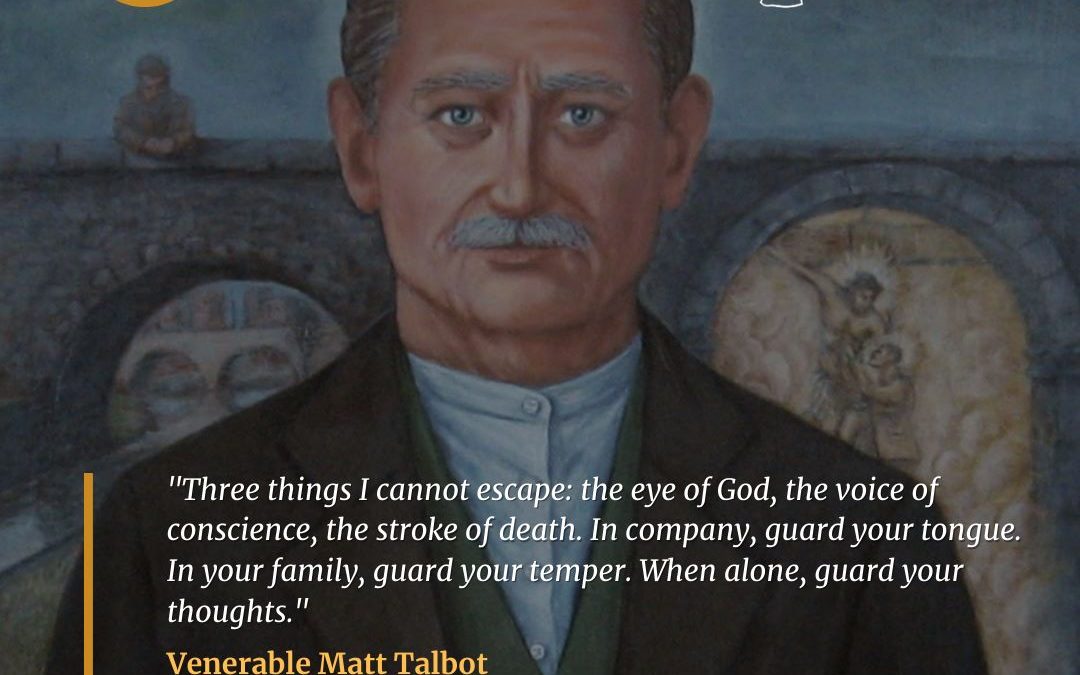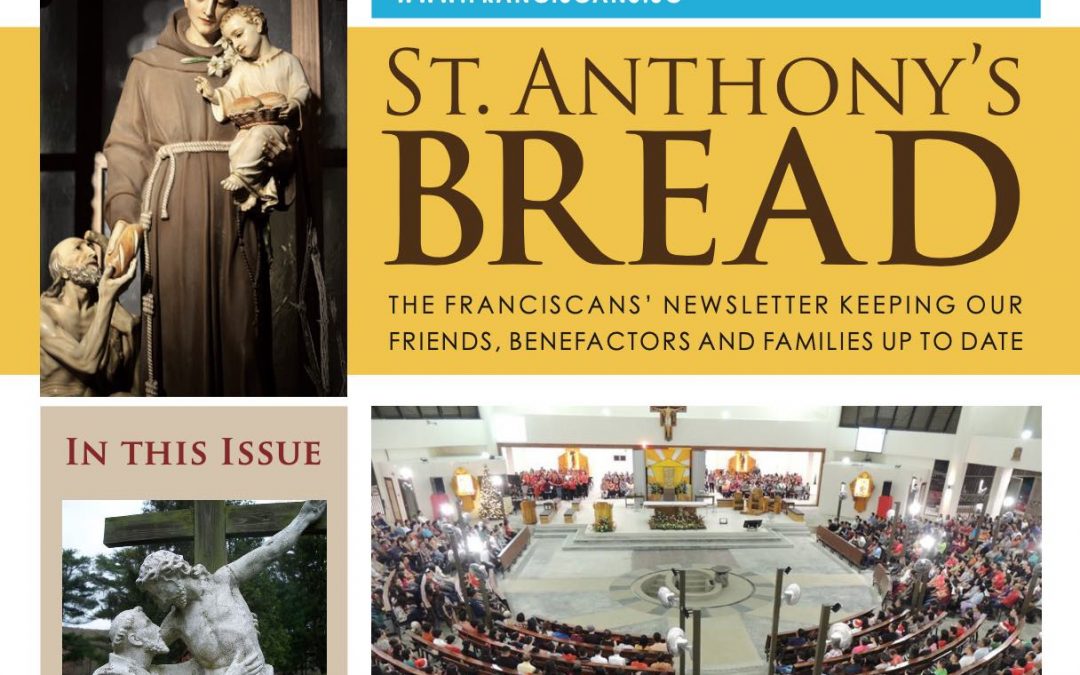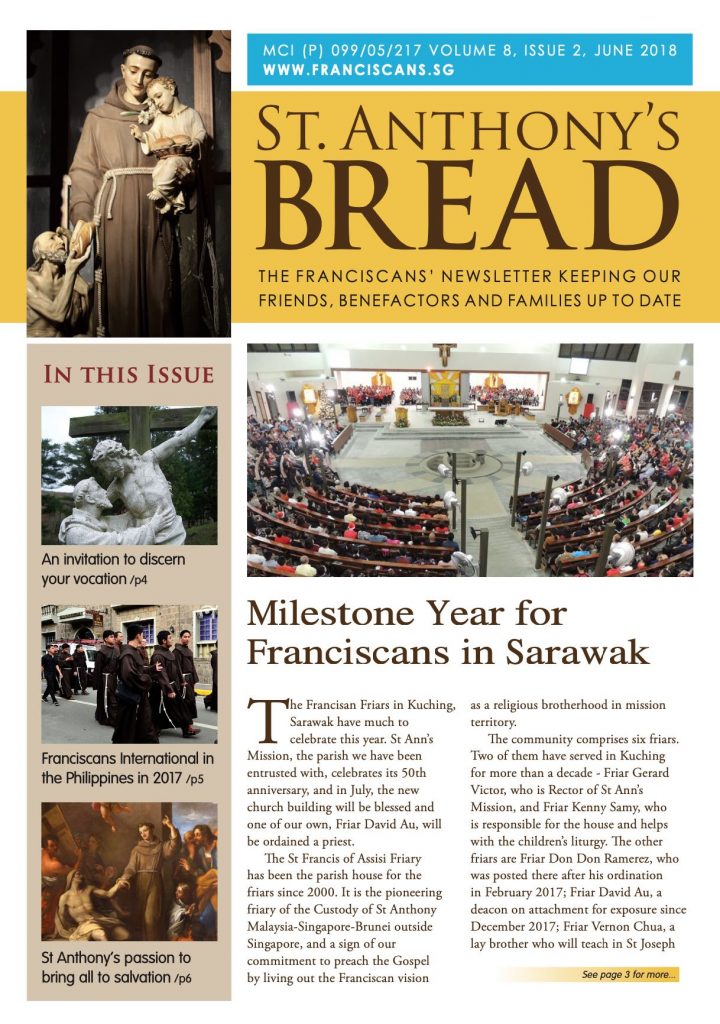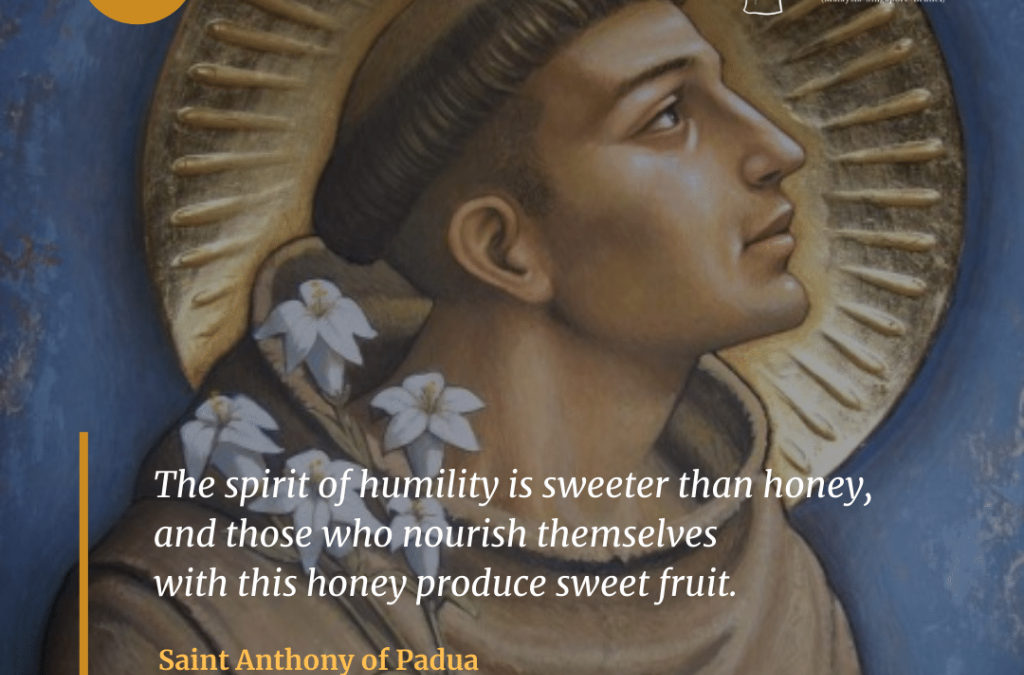
Saint Anthony of Padua (1195-1231)
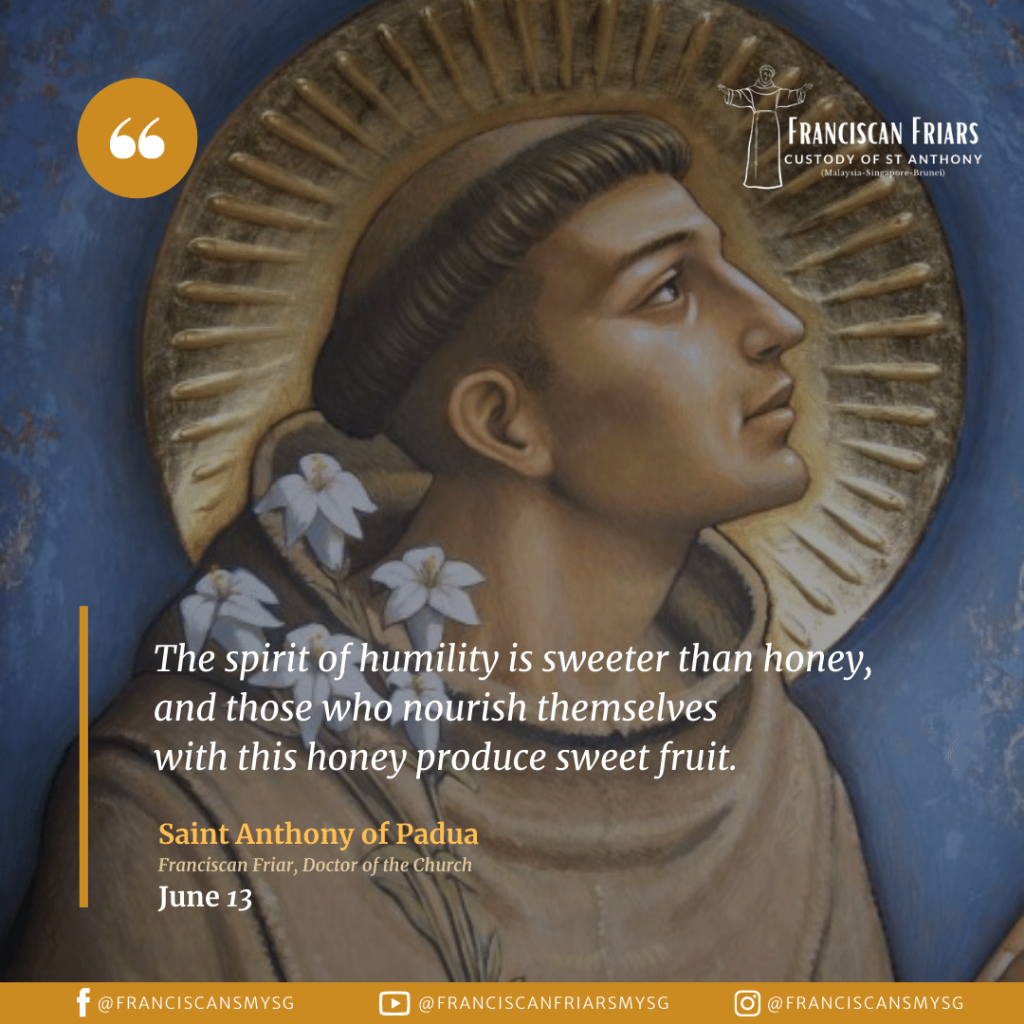
St. Anthony, who was born in Lisbon, first entered religious life as an Augustinian canon in Coimbra. There one day he met a group of visiting Franciscans (St. Be- rard and his companions) on their way to Morocco. He was greatly impressed by these courageous missionaries, the more so when news came of their subsequent martyrdom, followed by the return of their remains by way of his monastery. At once, he was inspired to join the Franciscans. He was accepted and was even granted his wish to follow in the footsteps of the martyrs. But no sooner had he arrived in Morocco than he became so ill that he was forced to turn around.
In 1221, he attended—along with three thousand other friars—a great Franciscan gathering, the last held in the lifetime of St. Francis. Afterward, he received a lowly assignment to a small hospice for lay brothers at Monte Paolo.
But soon his star would shine. At an important occasion, where the preacher failed to arrive, Anthony was asked to extemporize. He astonished his audience with the unexpected elegance, conviction, and profound learning of his sermon. Word quickly spread, and Anthony received a letter from Francis himself autho- rizing him to preach and to teach theology to the friars.
…he was unsparing when it came to the failings of the clergy and worldly bishops, whom he called “the most impudent dogs, having a harlot’s forehead, refusing to blush.
Eventually, he was sent on a preaching mission that covered all of Italy. Thousands flocked to hear his open-air sermons, and his visits had the impact of a spiritual revival. He attacked the tyranny of the powerful, exhorting his listeners to compassion and charity toward the poor, and he was unsparing when it came to the failings of the clergy and worldly bishops, whom he called “the most impudent dogs, having a harlot’s forehead, refusing to blush.” So successful were his exhortations to charity that he earned the title “Friend of the Poor.”
Anthony died on June 13, 1231, at the age of thirty-six. He was buried in Padua, where he had spent his last years, and his canonization followed only a year later. In 1946, Pope Pius XII declared him a Doctor of the Church. (Popularly, he is often invoked for his help in locating lost objects.)
Source : The Franciscan Saints (Franciscan Media)
